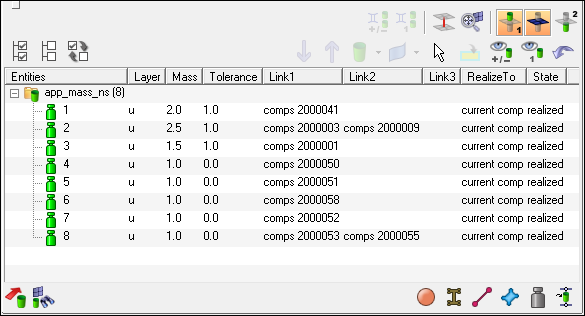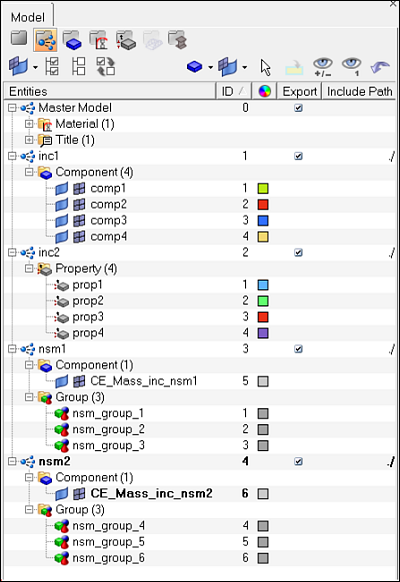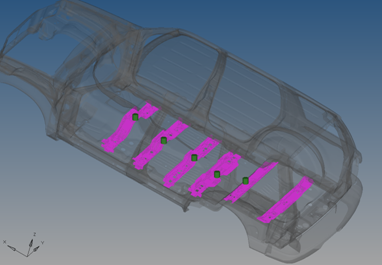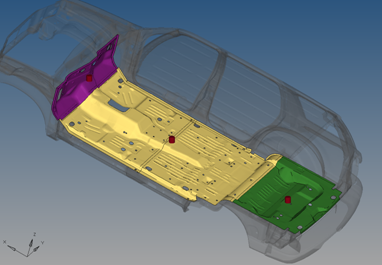Nastran Non-Structural Mass Connector (NSM)
HyperMesh handles non-structural masses for Nastran as group entities with a card image NSM1 or NSML1 assigned to them. Whereas normally a connector creates a specific element construct during realization, the NSM connector does not create any element. Instead, each NSM connector receives one group with the appropriate NSM1 or NSML1 card assigned.
Creation and Realization
The non-structural mass connectors can be created and realized in the Apply Mass panel in the Connectors module. The connector location is arbitrary and does not have any influence.

Figure 1.

Figure 2.
The groups created along the NSM connector realization are named as nsm_group_<CE_ID>.nsm_group_<CE_ID>, and placed in the current include. A new component named CE_Mass_inc_<include name> is created which contains all the connector information for that include. Each include is meant to host its own CE_Mass_inc_<include name> component, and HM will produce a warning if the component name already exists in a different include. This helps ensure that unrealizing and rerealizing nsm connectors will keep the FE data in its original include.
The assigned NSM solver card can be of either the PROPERTY or ELEMENT type. This strongly depends on the NSM entity type attribute, which is defined in the panel. The attribute used during creation is written to the connector and is reused for a realization.

Figure 3. Groups belonging to Connectors 4-8 in Review Mode
Absorption
The absorption works on all different types like PSHELL, PCOMP, PBAR, PBARL, PBEAM, PBEAML, PBCOMP and PROD.
- Reference to a certain group
- Lumped mass value in the appropriate NSM solver card
- All elements listed in the NSM solver card. These elements are all defined somehow as connector links. If possible, the single elements are condensed in component links.

Figure 4. Dashboard, Front Floor and Trunk Groups Absorbed into Connectors 1-3